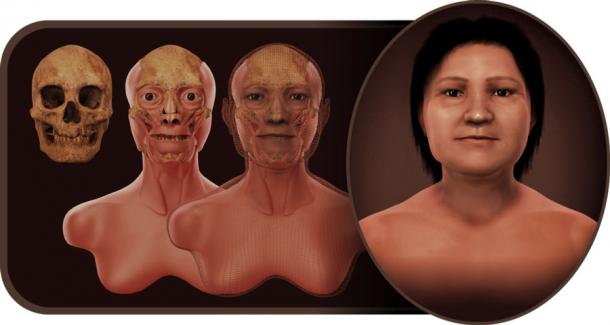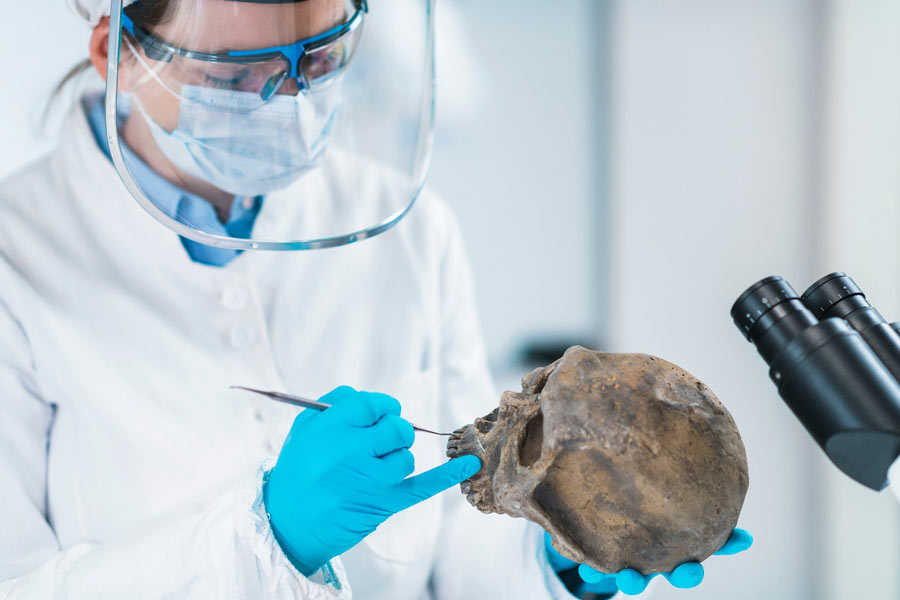Indigenous Uruguayan DNA Reveals Ancestry New To South America
A new study presents the first whole genome sequences of Uruguayan indigenous peoples, whose last remnants were wiped out in the 18th century through a series of targeted European military campaigns. The Uruguayan DNA study shows that the indigenous peoples of Uruguay had an ancestry that was previously unknown in South America. Surprisingly, there is a genetic connection to the ancient peoples of Panama and eastern Brazil but not to modern Amazonians. This perhaps indicates a migration route into South America along the Atlantic Coast.
According to an Emory University press release, study co-corresponding author, John Lindo, who is an assistant professor of anthropology specializing in ancient DNA at the university, said:
“Our work shows that the Indigenous people of ancient Uruguay exhibit an ancestry that has not been previously detected in South America. This contributes to the idea of South America being a place where multi-regional diversity existed, instead of the monolithic idea of a single Native American race across North and South America.”
Anthropologists from Emory University, Atlanta, and the University of the Republic, Montevideo have had the results of the study published the PNAS Nexus journal.
The Uruguayan DNA Samples
The samples for the study consisted of the indigenous Uruguayan DNA of a man who dated back 800 years, and of a woman who dated back 1,500 years. Both predate the arrival of Christopher Columbus that started off the chain of events that led to the colonization and near extinction of the native populations.
- Sierra de la Plata: The Inca Legend of the Silver Mountain
- Does Socos Pampa Geoglyph Reveal Nasca Lines Were Made Centuries Before Nasca Culture?

The Uruguayan DNA samples came from a woman and an unknown sex individual. The face of the woman, known as the ‘Grandmother of Uruguayans’, shown here in a reconstruction from her skull. (Cicero Moraes /CC BY-SA 4.0)
Uruguay is located on the Atlantic coast of South America, south of Brazil. The archaeological record for human settlement of the region goes back at least 10,000 years. European colonizers made initial contact with the indigenous populations of the region in the early 1500s. The samples for the study were taken from an archaeological site in eastern Uruguay and were extracted by co-corresponding author Gonzalo Figueiro, a biological anthropologist at the University of the Republic, Montevideo.
Evidence to Support Multiple Migrations into South America
The study found a genetic connection between the indigenous peoples of Uruguay and the ancient peoples of Panama and eastern Brazil, but not the modern Amazonian populations.
This finding seems to support the theory of multiple migrations into South America, one of which led to the ancestors of the modern Amazonians and another that peopled the east coast including the Uruguay region. “We've now provided genetic evidence that this theory may be correct. It runs counter to the theory of a single migration that split at the foot of the Andes,” Lindo said, according to the Emory University press release.
European Contact and Targeted Extermination
Although the first European contact with the Uruguay region happened in the early 1500s, the fierce resistance of the native population to the European attempts at colonization, coupled with absence of gold and silver kept it relatively free of European settlement in the 16th and 17th centuries.
There were about 9,000 Charrúa and 6,000 Chaná and Guaraní nomadic peoples at the time of contact with the Spanish in the 1500s. Some 300 years later, the total numbers had dwindled to around 500, owing mainly to European diseases to which they had little immunity.
These last remnants were wiped out by European genocide campaigns, culminating in the Massacre of Salsipuedes in 1831, where most of the Charrúa men were killed by the Uruguayan army, and the women and children were divided among Europeans as household slaves.

One of the last Charrúa warriors before they were “exterminated” by the Europeans in a painting by Jean-Baptiste Debret. (Jean-Baptiste Debret / Public domain)
Challenges of Reconstructing Ancient DNA from South America
Now, the new research has been able to reconstruct at least part of the prehistory of these indigenous people before the arrival of the Europeans. However, the researchers call for a wider ancient DNA sample pool from across Uruguay for better matches. “We would like to gather more DNA samples from ancient archaeological sites from all over Uruguay, which would allow people living in the country today to explore a possible genetic connection,” Lindo said in the press release.
- The Last of the Charrua: The Honored Warrior Tribe of Uruguay
- Research Reveals New Link In Australasian and South American Ancestry
Sequencing ancient DNA from South America faces two challenges. One is the warm humid climate that makes it difficult to collect usable samples. However, advances in sequencing technology have helped deal with this problem. The other difficulty in obtaining ancient DNA samples is the decimation of entire native populations with the arrival of the Europeans.
However, Lindo hopes to address these challenges through advanced techniques as well as close collaboration with Indigenous communities and local archaeologists. He intends to build a free online portal with a substantial number of DNA references from the Americas that will help people trace their ancestry.
The study offers interesting new insights into the Uruguayan indigenous peoples who disappeared as a result of European colonization. It offers Uruguayans an opportunity to trace their ancestry back to these “lost” peoples.
Top image: Ancient Uruguayan DNA is being used to understand the migrations of indigenous peoples to South America. This image shows a scientist working in bio-archaeology lab. Source: Microgen / Adobe Stock
By Sahir Pandey
References
Lindo, J. et al. 2022. The genomic prehistory of the indigenous peoples of Uruguay. Available at: https://academic.oup.com/pnasnexus/advance-article/doi/10.1093/pnasnexus/pgac047/6571940?login=false.
ScienceDaily. 2022. Ancient DNA gives new insights into 'lost' Indigenous people of Uruguay. Available at: https://www.sciencedaily.com/releases/2022/05/220511123507.htm.





















Comments
Edit.. missed tbe "Panamanian and eastern brazillian" part.. but y would eastern Brazilian dna be undetected in s america? Unless u meant portigese but again u mention precolumbian migrations...and the mention of diversity unknown before.. if it was only 2 other known bloodlines i couldnt consider that diverse.. maybe slightly more diverse.. ill shut up now.. n wait for the hate XD
infinitesimal waveparticles comprise what we call home the earth
manipulatable by thought ability supressed in humans since birth
And all of you unscientific "people" dissing on pete.. heres some evidence
http://ancientnuclearwar.com/
infinitesimal waveparticles comprise what we call home the earth
manipulatable by thought ability supressed in humans since birth
No mention whatsoever of these supposed ancestors.. only their diversity.. hmm hypotheses..
Book of Mormon had it right n they found israelite dna(since pre Babylon cant call them jews) vikings? Africans? Chinese? All of the above? Was it antediluvian or post flood? In any case a melting pot dna is strong circumstancial evidence that there might very well have been an ancient worldwide culture..
infinitesimal waveparticles comprise what we call home the earth
manipulatable by thought ability supressed in humans since birth